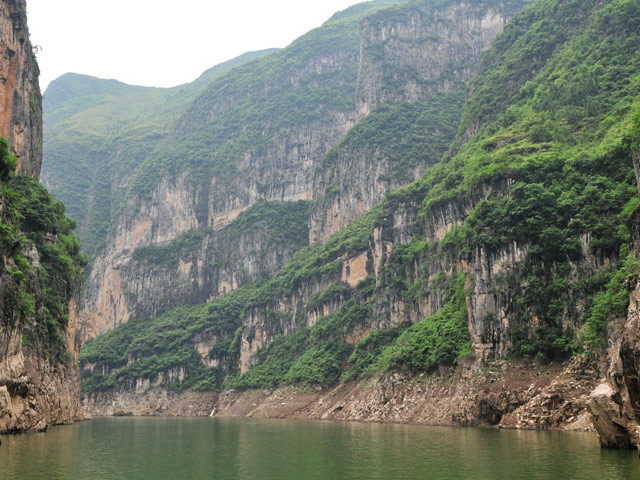White Emperor City

White Emperor City, located at the entrance of the Qutang Gorge on the north bank of the river, is 8 kilometers (5 miles) from Fengjie county seat. The mini city rests on top of Baidi Hill and is filled with scattered temples and gates. Set among grand hills and cliffs, it provides both a look into China’s glorious past and a view of China's tranquil natural scenery.
The White Emperor City is said to have been built by Gongsun Shu, an official turned soldier, as the site of his headquarters near the end of the Western Han Dynasty. The legend goes that in 25 A.D. Gong Sunshu saw white vapor in the shape of a dragon rising from a nearby well. Taking this to be an auspicious omen, he declared himself the 'White Emperor' and renamed the town 'White Emperor City'. Later in 36A.D. he waged war against Liuxiu (Emperor Guangwu of the Eastern Han Dynasty), then a member of the Han imperial family. During this turbulent period, the city survived completely intact. The grateful local people then built a temple to commemorate him. During the Ming Dynasty, the statue of Gongsun Shu was replaced with a new one for Liubei and later with three for Guanyu, Zhang Fei, and Zhuge Liang.
Another story of the city offers a look into the Three Kingdoms Period. During this time, Liu Bei, the king of Shu, retreated from a disastrous war against general Lu Xun of the Wu Kingdom, and died here in distress. On his deathbed, Liu entrusted state affairs and his son, Liu Chan, to Prime Minister Zhuge Liang (one of the most famous philosophers and inventors China's history). The front hall of White Emperor City contains large modern statues which depict the scene in the story. The front hall is also home to the winged Observing Stars Pavilion (Guanxing Ting) where Zhuge Liang observed the stars and made accurate weather forecasts which helped him plan his victorious battles. With upturned eaves and polished beams, the temple has 12 pillars on the ground floor and 6 on the upper floor.
White emperor city is also known as the City of Poems. In ancient times many scholars and poets attracted by its fame visited here and left behind many signs of the high literary importance of that time. The city is filled with over 70 poems, carvings, and cultural relics of the Sui, Yuan, Ming, and Qing dynasties The most famous of the relics include two steles from Sui, Qing Emperor Kangxi, Bamboo-Leaf Stele and Phoenix Stele.
Lesser Three Gorges is situated along the Daning River, one of the main tributaries of Yangtze River, with a total length of about 250 kilometers (155 miles).
The Dazu Grottoes are made up of more than forty sites of stone carvings with over 50,000 statues of Buddha. The Grottoes were completed during the Tang and Song Dynasties.




